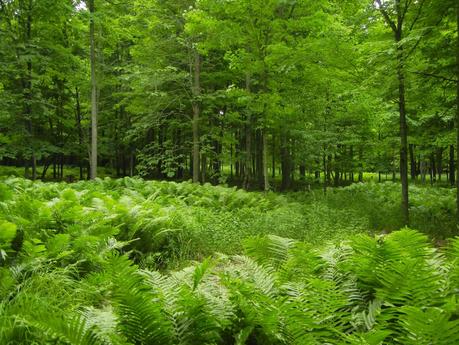
We ended up with a free Saturday afternoon last weekend and headed toward our favorite central Wisconsin park - Big Eau Pleine County Park! Everything was much greener than our last visit. Luckily, it was a very breezy day which made it difficult for the mosquitoes to land on us.

The ferns were almost as tall as me!
A bald eagle flew through the forest right in front of us, followed by a younger juvenile one. I had to stop and watch the pristine maneuvering of their large wingspan through the dense trees - just amazing!
We also saw several deer on this day - mostly young ones, and a mother doe nursing her baby fawn.
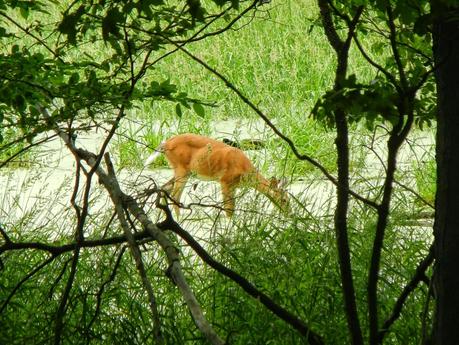


We revisited the site of the dead raccoon from our last visit, and was surprised to see it had not been disturbed; the process of nature taking its course.
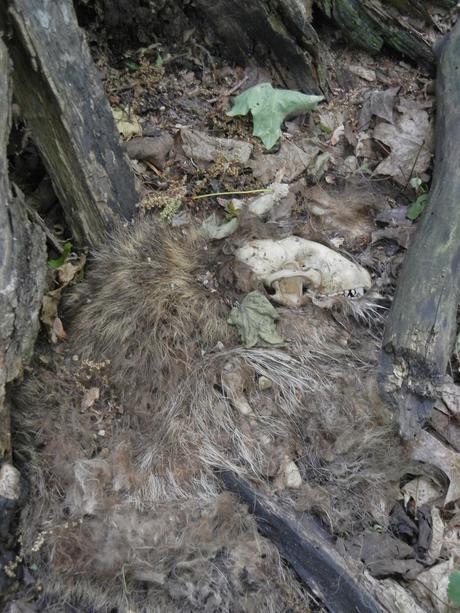
Charlie was startled by a large piece of "garbage" near the trail, so we stopped to investigate. It turned out to be one of those luminaries that people release in the night, glowing with their messages to loved ones. A beautiful idea, but still... garbage littering the landscape.
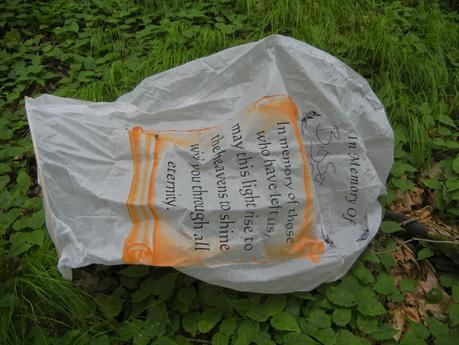
All was going well with our long afternoon hike until Charlie stopped near one of the large piles of horse dung randomly scattered along the trail (most of these trails are shared by horseback riders, mountain bikes and hikers), and took a big bite out of it!
Blech.
There's not much that turns my stomach, but poop-eating is definitely one of them!
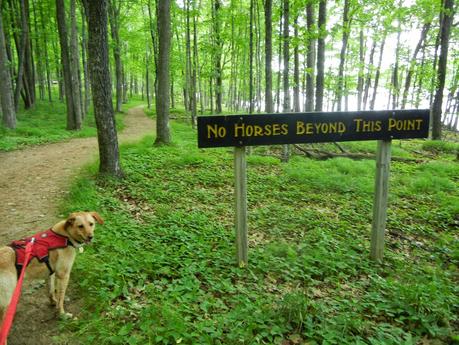
But I started thinking about my recent reading assignments from my dog nutrition course books and I wondered if she was eating this horse poop because it was filled with grass. Because you know dogs like eating grass.
The downside is that grass is not the greatest source of chlorophyll and typically goes through the digestive system without releasing much benefit.
Most wild animals get their source of chlorophyll from the intestines of their prey and they also have access to all the wild vegetation they can find. Domestic dogs don't get this opportunity, and typically grass is the only green thing they have access to.
Chlorophyll is the green pigment found in almost all plants and has enormous benefits. It helps cleanse the cells of the body, fights infection, heals wounds, builds the immune system and detoxifies the digestive system. It also promotes digestive health, which is why dogs probably eat grass when they're not feeling well. Another bonus to eating chlorophyll - it can eliminate mouth odors, helping with bad breath!
No wonder we're always being told to eat our veggies! And that goes for dogs too.
So next time you're preparing dinner, saute some greens in a little butter for both you and your dog. Some good veggies to start with: spinach, broccoli, asparagus, peas, kale, parsley, beans and sprouts. I regularly feed Charlie fresh fruit and veggies, but since this poop-eating incident, I might try ratcheting up some of her veggie variety to make sure she's getting everything she needs.
I have to admit that even though I keep Charlie's healthy interests in mind, I stopped on our way home for a Pup Cone at our local ice cream place. Sometimes you just have to have a treat!
Disclaimer: I am not a veterinarian or licensed health professional. All information contained in this article is my own opinion gained through educating myself from a variety of sources. Always consult with your veterinarian regarding your pet's health. You are your pet's health advocate and it is up to you to make wise and healthy decisions on their behalf.

